Long-time readers of this blog (if there are any) as well as any real life friends in Vermont will remember how excited I got about coloring icicles, and later coloring small urban snowmelt streams, to help show people the path of urban runoff. Lately, I found a bunch of food coloring on sale, and decided to see if I could find water movement in unexpected places.
Because of diffusion, dye will move even through perfectly still water; the slight differences in the density of dye may also cause it to move. For the most part, though, the swirls and patterns created when food dye is placed in water are caused by otherwise invisible currents in the water.
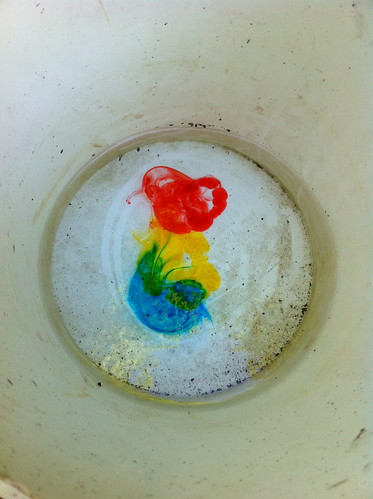
Below is a rain barrel used to collect rainwater for our garden (though we have barely had to use it due to the wet conditions). Apparently, a light wind blowing at just the right angle had set most of the water column rotating. It could not be detected just by looking at the water, but the food coloring revealed an amazing amount of complexity in this 'standing' water.

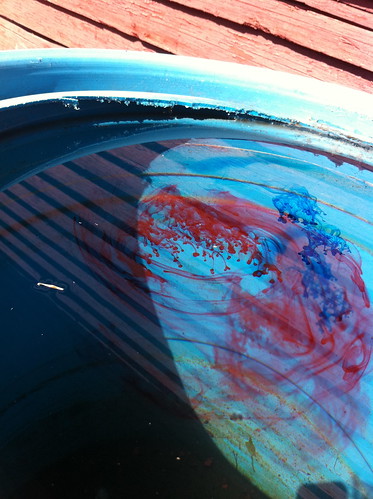
(the 'falling mushroom' shapes are due to the food coloring sinking, due to density or temperature, and don't appear to be part of the currents).
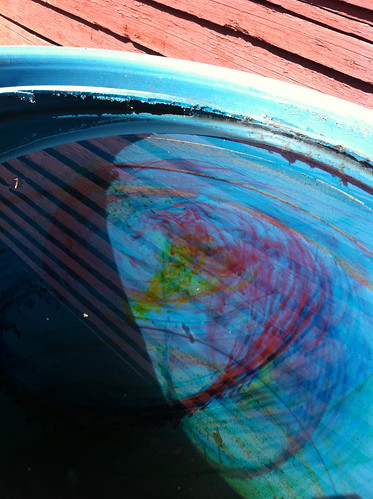
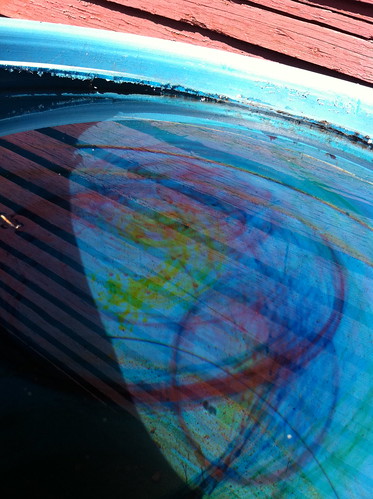
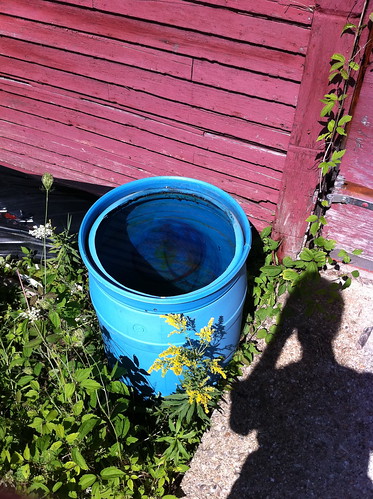
After a while, the currents wrapped the dye into shapes resembling the spiral bands of a hurricane. After a while longer, the food dye dispersed completely, or was destroyed by sunlight, and was gone.
These currents below were found in water pooled in the back of my pickup truck after a storm.
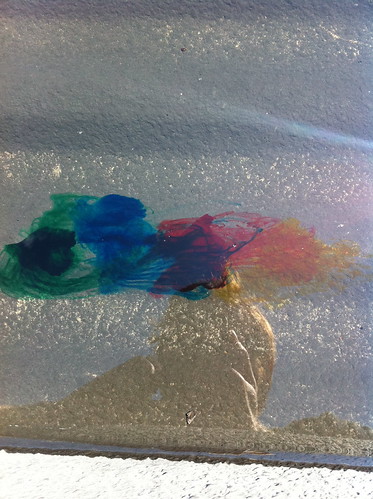
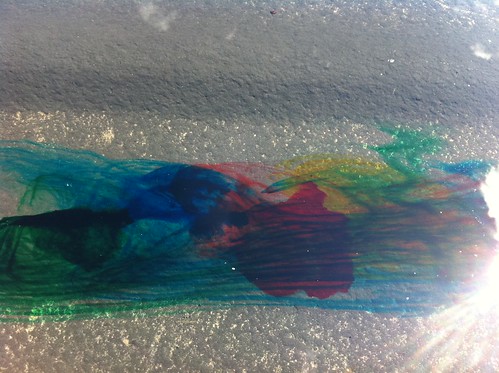
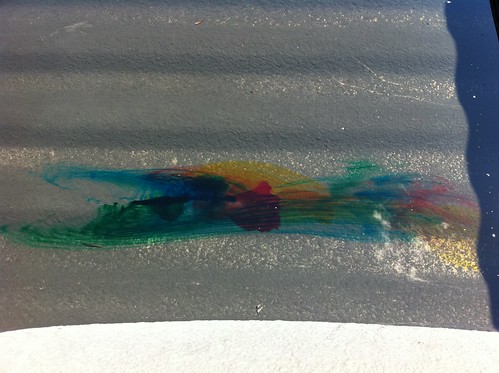
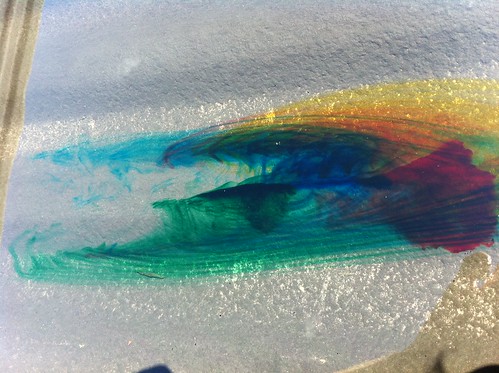
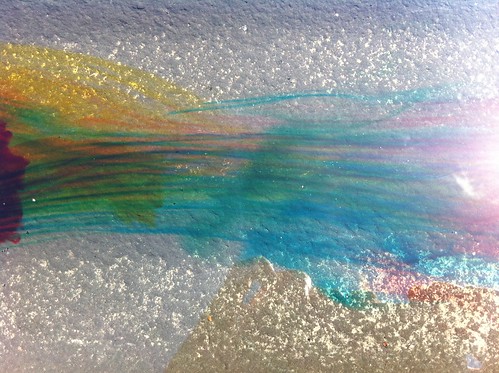

I think these currents may have been caused by convection associated with different water temperatures. You can see in one of the pictures here that some of the water was in the shade. In the sunny areas, sunlight hitting the black truck bed liner was heating water, causing it to expand. Meanwhile, water in the shady area was relatively cooler, and sank relative to the warm water. This would cause cold water in the deeper areas (it was an inch or two deep) to move into the sun, while water at the surface would move towards the shady area. Meanwhile, wind added an element of randomness. While I'm not certain if this type of convective current was happening in the back of my truck, it is the driving factor of ocean currents and large weather systems (along with the Coreolis effect, which causes swirling and does not have any measurable effect on small bodies of water like my car.
Below, water flows across a dirt road after a storm. Note that the water is moving quickly and not soaking in, because the road surface is compacted. Dirt roads may absorb a bit more water than asphalt but they still lead to rapid runoff.
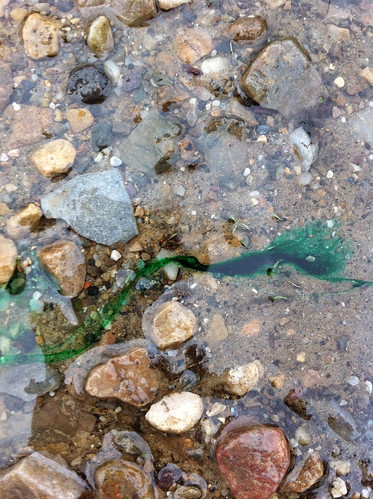
Two streams come together:
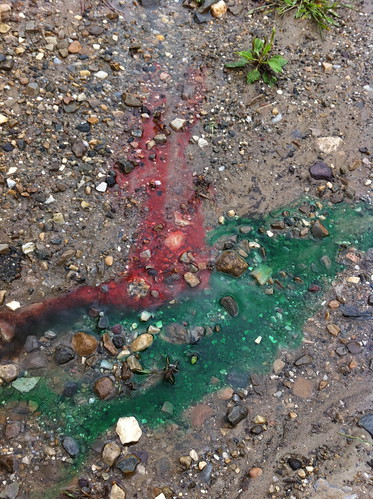
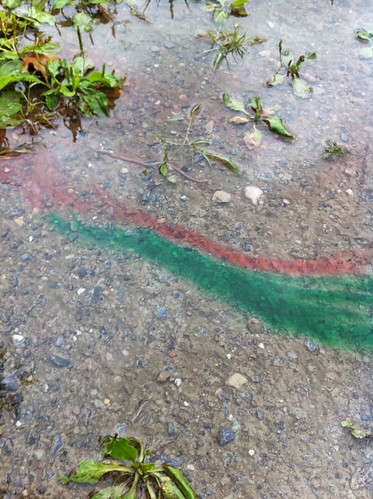
A small 'delta' in a puddle:
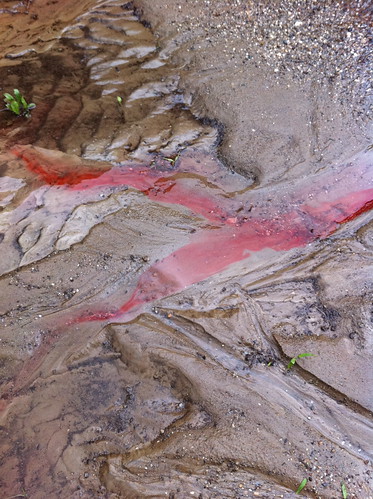
For more photos of food coloring in runoff, including the icicle photos from last winter, see here.

What about the currents created by droplet of food coloring splashing into the water, even if ever so small a splash it is?
ReplyDeleteThe current from the droplet definitely has an effect! For most of these I drop the droplet from as close to the water surface as possible, but there is still a downward motion. The different density or temperature of the food coloring also seems to affect how it moves through the water.
ReplyDelete